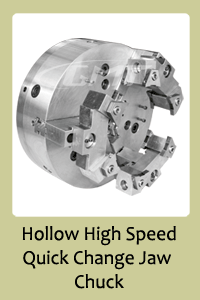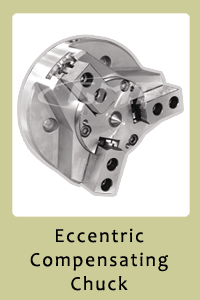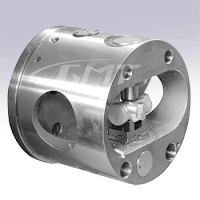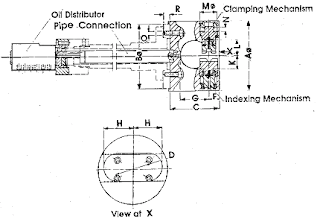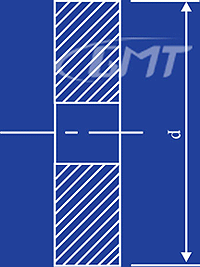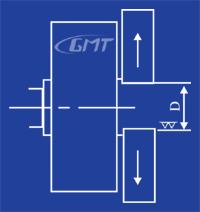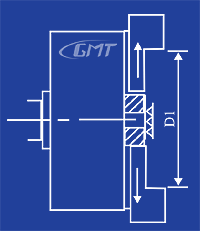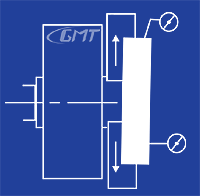The range of our PHNC Chucks is medium. PHNC is meant to provide a high speed range. Power OperatedQuick Change Jaw Chuck really provides a super high speed range. The machines of the immediate feature will require very high speed range of speeds without almost any loss of clamping pressure at high speed.
CNC Lathes are used particularly to machine small and medium
sized batches. This involves frequent change over of the chuck jaws, which can
be accomplished without undue cost by using chucks with quick change jaws.
GMT has designed a power chuck with a quick change jaw
system. This chuck helps in reducing the jaw changing time to a minimum. The
wedge bars are designed to help counteract the effects of centrifugal force,
and in fact this is done by setting them into the angled pockets in the body of the chuck. Moreover, the angles chosen
by GMT for the piston shoulders and wedge bar teeth provide high mechanical efficiency
ratio that provides for both sensitive and high pressure clamping.
To withstand the most arduous working conditions, all PHQC
chucks are designed with a high factor of safety. PHQC Chucks are operated by
means of rotary cylinders controlled by proximity switches that provide signals
concerning the state of the chuck i.e. clamping or declamping.
WORKING
This power chuck is different from other chucks. Its quick
change jaw system has the inherent advantage for rapid resetting or changing of
the gripping jaw. It is only necessary to release an eccentric locking pin with
a special hexagonal key in each of the jaws keeping the chuck stationary. This disengages
the gripping jaws, which can then be -reset to the required gripping diameter
or can be reversed or can be replaced by a jaw from another set. Turning the
key again reengages the gripping jaw and enables the key to be withdrawn and
this operation provide great reliability.
PHQC chucks offer an effectively simple but technically
advanced design to satisfy the high demands in both production and safety and
modern machining. In addition the chuck offers a genuinely quick change jaw
system with a speed and strength combination compatible with increased
production and safety.
